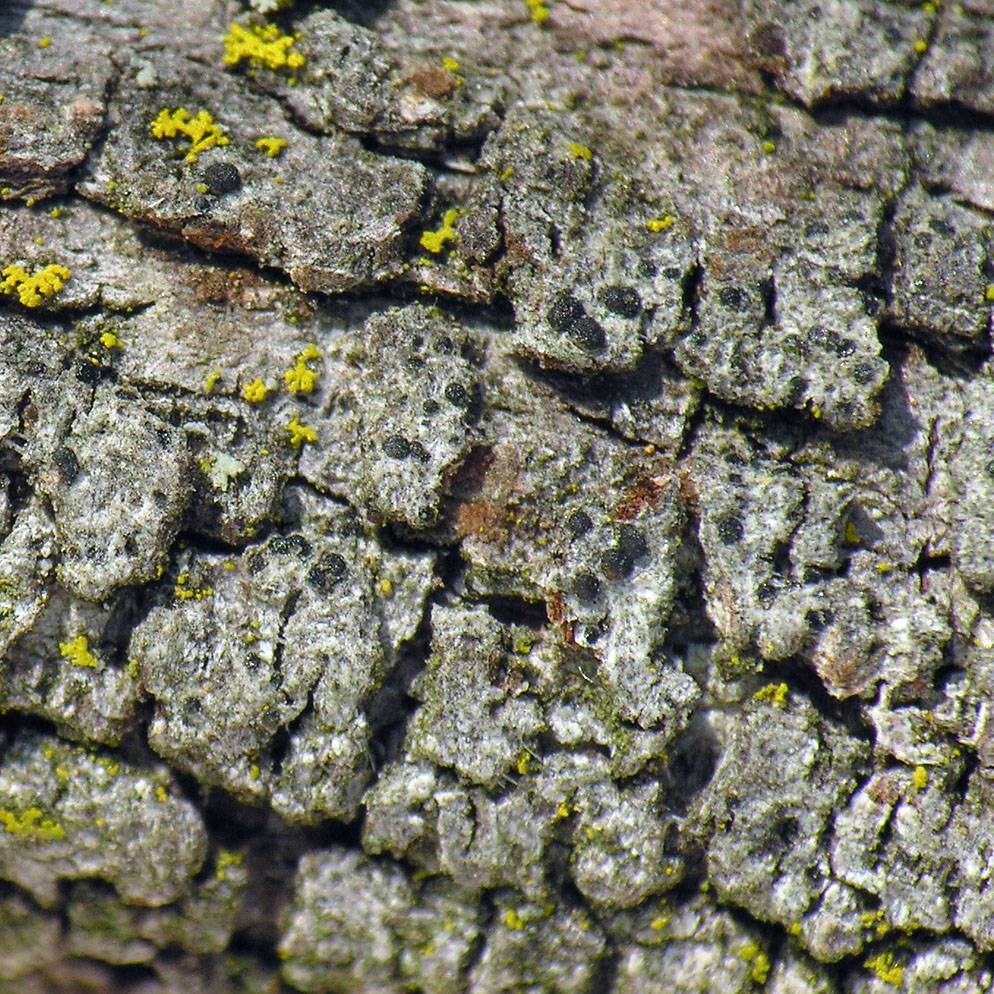
Consortium of Lichen Herbaria
- building a Global Consortium of Bryophytes and Lichens as keystones of cryptobiotic communities -
- Home
- Search
- Images
- Species Checklists
- US States: O-Z >
- US National Parks
- Central America
- South America
- US National Parks
- Southern Subpolar Region
|
Family: Strangosporaceae |
Nash, T.H., Ryan, B.D., Gries, C., Bungartz, F., (eds.) 2007. Lichen Flora of the Greater Sonoran Desert Region. Vol 3. Life habit: lichenized Thallus: absent or thin and poorly developed photobiont: primary one a chlorococcoid green alga, secondary one absent Apothecia: biatorine, convex, colorless, scarlet, orange, or dark brown or black, usually epruinose true exciple: usually very thin to almost absent epihymenium: hyaline to yellow or orange or blue nium: variously colored to hyaline; paraphyses: branched and ±anastomosed, in a gelatinous matrix but with free apices asci: clavate, with a strongly thickened, I+ blue wall, particularly at the apex, without gelatinous outer layer, and a strongly I+ blue apical dome ascospores: colorless, simple, mainly globose, 1.5-5 µm in diam.; wall: thin, smooth Conidiomata: pycnidial, immersed, small, globose, colorless to pale brown, not found in Sonoran specimens conidia: ellipsoid Secondary metabolites: pigments present in some species, especially in the apothecia Geography: Asia, Europe, and North America Substrate: on bark or wood, sometimes overgrowing bryophytes. Notes: Strangospora is distinguished from Acarospora and Biatorella by its I+blue tholus. Zahlbruckner included Strangospora in Biatorella, but the asci of Biatorella s. str. has an I+ blue gelatinous outer layer and I- (to faintly I+ blue) tholus. The latter genus is not known from Sonoran area, though B. hemisphaerica Anzi should be sought in high elevation, montane habitats on soil with mosses in shady crevices. |
Powered by Symbiota









